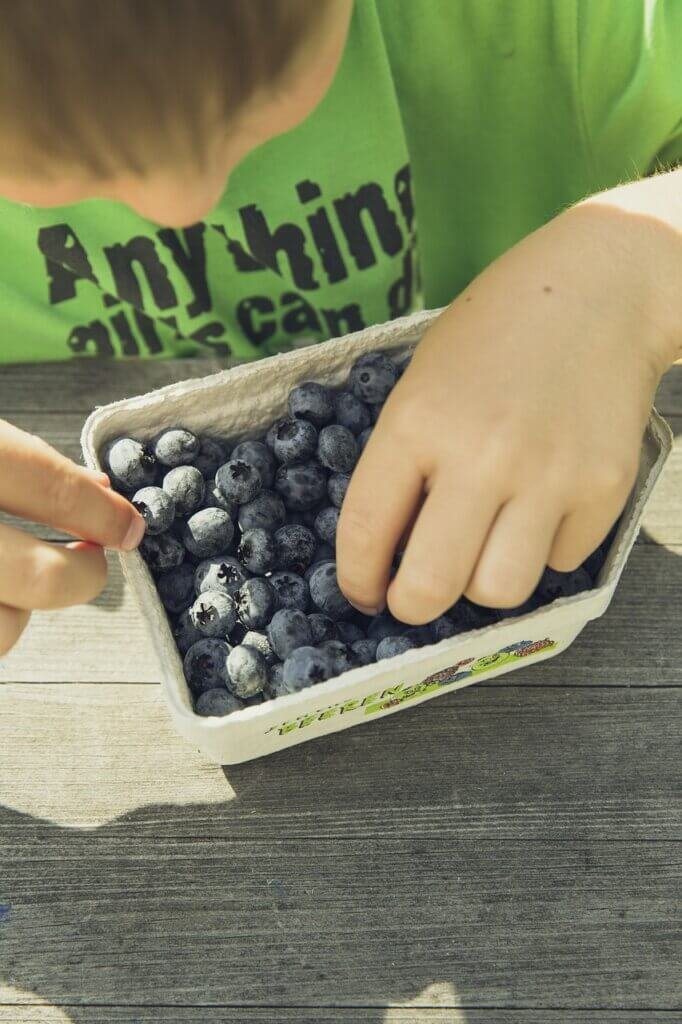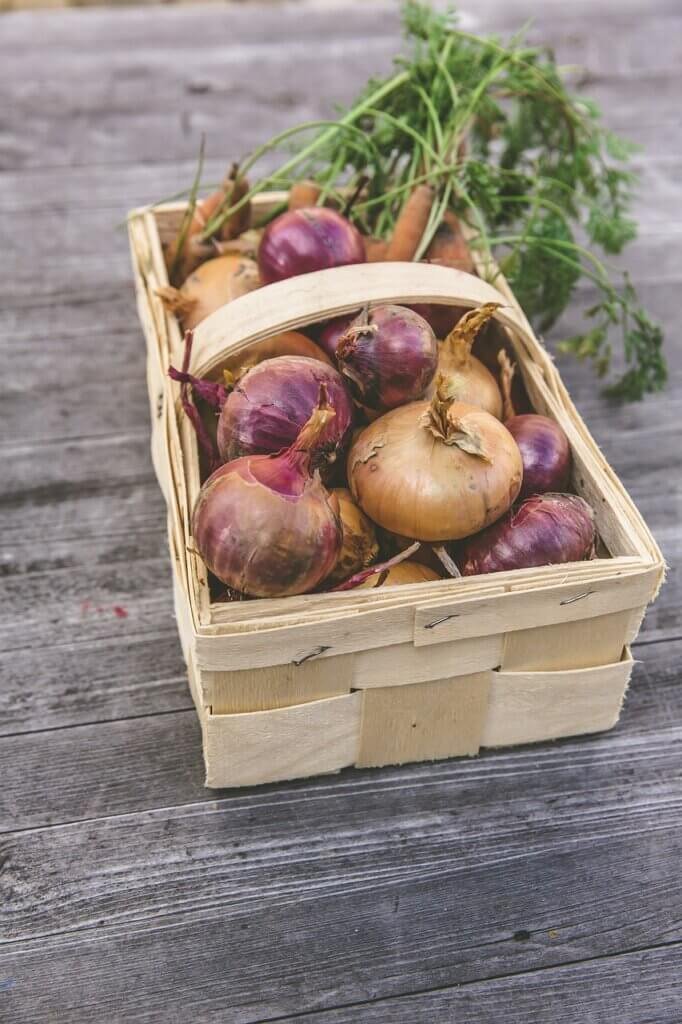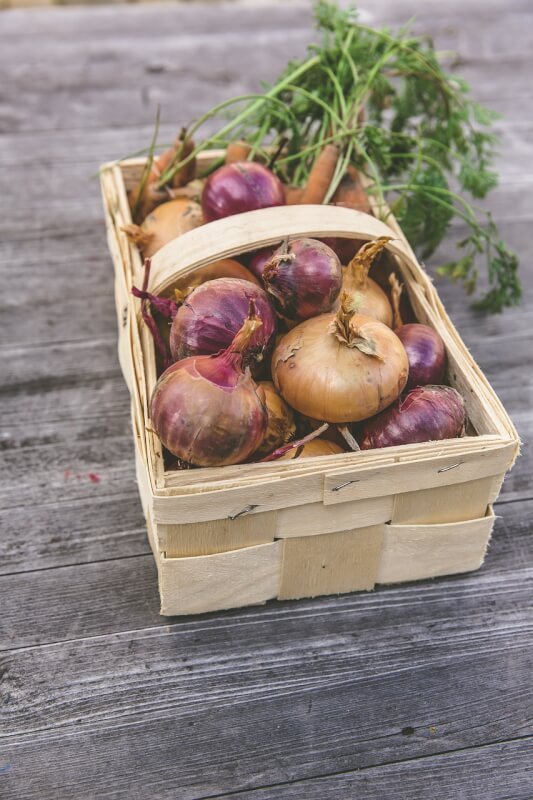Are you ready to take your urban gardening to the next level? Look no further! In this article, we will guide you through the essential tips for selecting the right soil and fertilizers for your urban garden. Whether you have a small balcony garden or a rooftop oasis, choosing the right soil and fertilizers is crucial for the success of your plants. So, grab your gardening gloves and get ready to transform your urban space into a thriving green haven!

Types of Soil
1.1 Topsoil
Topsoil is the upper layer of soil that is rich in organic matter and nutrients. It is typically the most fertile layer of soil and provides an ideal environment for plants to grow. Topsoil is often used for gardening and landscaping purposes, as it helps improve soil structure and fertility. It is important to note that not all topsoil is created equal, as the quality and composition can vary depending on the source. When selecting topsoil, look for a reputable supplier that offers high-quality, nutrient-rich topsoil to ensure the best results for your garden.
1.2 Potting Soil
Potting soil, also known as potting mix, is specifically formulated for container gardening. It differs from topsoil in that it is lighter and has better drainage to prevent waterlogged roots. Potting soil is typically a blend of organic matter, such as peat moss or coconut coir, as well as perlite or vermiculite for improved aeration. Additionally, potting soil may contain added nutrients to support plant growth. When choosing a potting soil, consider the specific needs of your plants and select a mix that is suitable for their requirements.
1.3 Compost
Compost is a valuable soil amendment that enriches the soil with organic matter. It is created through the decomposition of organic waste, such as kitchen scraps, yard trimmings, and leaves. Compost improves soil fertility, structure, and water retention, while also providing essential nutrients to plants. It can be used as a top dressing or incorporated into the soil when planting. Compost is an excellent choice for sustainable gardening, as it reduces the amount of organic waste that goes to landfills and promotes a healthy, thriving garden.
Soil Testing
2.1 Importance of Soil Testing
Soil testing plays a crucial role in successful gardening. It provides valuable information about the composition and fertility of the soil, helping you make informed decisions regarding fertilization and soil amendments. By testing your soil, you can determine its pH level, nutrient content, and the presence of any deficiencies or imbalances. This knowledge allows you to address any issues and create an optimal growing environment for your plants. Soil testing is especially important if you are experiencing poor plant growth or suspect nutrient deficiencies.
2.2 Testing Kits and Services
There are various methods to test your soil, ranging from DIY testing kits to professional soil testing services. DIY kits are readily available and usually involve taking soil samples and using reagents to analyze the pH level and nutrient content. While these kits can provide basic information, they may not be as accurate as professional testing. Professional soil testing services typically involve sending soil samples to a laboratory, where they undergo comprehensive analysis. These services offer more detailed results and can provide specific recommendations for improving soil fertility.
2.3 Sampling Techniques
To obtain accurate soil test results, proper sampling techniques are essential. When collecting soil samples, ensure that you sample from multiple locations within your garden or planting area. Take samples from both the surface and deeper layers of soil to get a comprehensive representation of its composition. Use a clean trowel or soil sampling tool to collect samples, avoiding any areas that may have been recently fertilized or treated with chemicals. Mix the samples together in a clean container and allow them to air dry before sending them for testing.
Understanding Soil Texture
3.1 Soil Texture and Drainage
Soil texture refers to the relative proportions of sand, silt, and clay particles in the soil. It plays a significant role in determining the soil’s ability to retain moisture and provide proper drainage. Sandy soils have larger particles and tend to drain quickly, while clay soils have smaller particles and hold moisture for longer periods. Loam soils, which are a balance of sand, silt, and clay, are considered ideal for gardening due to their ability to retain moisture while allowing for adequate drainage. Understanding your soil’s texture can help you determine the best watering and drainage practices for your plants.
3.2 Identifying Soil Texture
To identify your soil’s texture, you can perform a simple soil texture test. Start by collecting a soil sample and removing any rocks, roots, or debris. Add water to the sample, a little at a time, and knead it until it forms a ball. If the soil feels gritty and falls apart easily, it is likely sandy. If it forms a somewhat cohesive ball but still crumbles when squeezed, it is most likely loamy. If the soil feels sticky and holds together well, it is likely clay. By understanding your soil’s texture, you can make more accurate decisions regarding irrigation, water retention, and soil amendments.
3.3 Improving Soil Texture
Improving soil texture can be done through soil amendments and cultivation practices. For heavy clay soils, adding organic matter such as compost or aged manure can help improve drainage and create air pockets. Incorporating sand or perlite into heavy clay soils can also aid in improving drainage. Sandy soils can benefit from the addition of organic matter to enhance moisture retention. Regularly incorporating organic matter into the soil through composting can gradually improve soil texture over time. By improving soil texture, you can create a more favorable growing environment for your plants.
pH Levels and Soil Acidity
4.1 The Importance of pH Levels
pH levels represent the acidity or alkalinity of the soil and can significantly impact plant health. Different plants have different pH preferences, and maintaining the appropriate pH level is essential for nutrient availability and uptake. Most plants prefer a slightly acidic to neutral soil pH, around 6 to 7. Acid-loving plants, such as azaleas and blueberries, thrive in more acidic soils, while alkaline-loving plants, like lavender and clematis, prefer a more alkaline environment. Understanding your soil’s pH and adjusting it accordingly can promote healthy plant growth.
4.2 Testing Soil pH
Testing soil pH can be done using a pH testing kit or meter. The kit typically involves mixing soil with a testing solution and comparing the color change to a chart to determine the pH level. pH testing meters provide a digital reading and offer a more precise measurement. When testing soil pH, it is important to take multiple samples from different areas of your garden to account for any variations. If your soil’s pH is outside the optimal range for your desired plants, you can adjust it using appropriate amendments.
4.3 Adjusting pH Levels
To adjust soil pH, you can use soil amendments that are specifically designed for pH correction. For increasing soil acidity, amendments such as sulfur or acidic organic materials like pine needles or peat moss can be used. For decreasing soil acidity and increasing alkalinity, lime or wood ashes can be added to the soil. It is important to follow the recommended application rates and guidelines provided with the amendments to avoid overcorrection or causing harm to the plants. Adjusting soil pH can take time, so it is crucial to monitor and retest periodically to ensure the desired pH level is achieved.

Nutrients for Healthy Plants
5.1 Macronutrients and Micronutrients
Plants require essential nutrients for healthy growth and development. These nutrients can be classified into macronutrients and micronutrients. Macronutrients are needed in larger quantities and include nitrogen (N), phosphorus (P), and potassium (K), often referred to as NPK. These nutrients play important roles in plant growth, root development, and flower and fruit production. Micronutrients, such as iron (Fe), manganese (Mn), and zinc (Zn), are required in smaller amounts but are equally vital for plant health. Understanding the nutrient requirements of your plants can help you select the appropriate fertilizers to provide a well-balanced diet.
5.2 Organic vs. Synthetic Fertilizers
When it comes to fertilizers, you have the option to choose between organic and synthetic varieties. Organic fertilizers are derived from natural sources, such as compost, manure, or bone meal. They slowly release nutrients into the soil, improving its overall fertility and structure. Organic fertilizers also promote microbial activity and enhance soil health. Synthetic fertilizers, on the other hand, are artificially made and provide nutrients in specific ratios. They are quickly absorbed by plants and provide rapid results. Both types of fertilizers have their advantages and choosing the right one depends on your gardening goals and preferences.
5.3 Slow-Release Fertilizers
Slow-release fertilizers are a popular choice for gardeners looking for long-lasting nutrient availability. These fertilizers are formulated to release nutrients gradually over an extended period. Slow-release fertilizers can come in organic or synthetic forms and are available in granular or pelletized forms. They provide a continuous supply of nutrients to plants, reducing the risk of nutrient deficiencies and minimizing leaching into the environment. Slow-release fertilizers are ideal for gardens where frequent applications of fertilizers may not be practical or desired.
Choosing the Right Fertilizers
6.1 NPK Ratio
When selecting fertilizers, understanding the NPK ratio is crucial. The NPK ratio represents the proportion of nitrogen (N), phosphorus (P), and potassium (K) in the fertilizer. Each nutrient has specific roles in plant growth and development. Nitrogen promotes leafy green growth, phosphorus supports root development and flowering, and potassium aids in overall plant health and disease resistance. The ideal NPK ratio for your plants will depend on their specific nutrient requirements and growth stages. By choosing the right NPK ratio, you can ensure your plants receive the nutrients they need for optimal growth.
6.2 Fertilizer Formulations
Fertilizers are available in various formulations, including granular, liquid, and soluble forms. Granular fertilizers are solid particles that are applied to the soil and slowly break down over time, releasing nutrients. They are easy to use and provide long-lasting results. Liquid fertilizers are dissolved in water and can be applied directly to the soil or sprayed onto the foliage of the plants. They provide quick results and are often used for foliar feeding. Soluble fertilizers are similar to liquid fertilizers but are provided in a concentrated form that needs to be diluted before application. They are convenient and quickly absorbed by plants.
6.3 Specialty Fertilizers
In addition to general-purpose fertilizers, there are specialty fertilizers available to address specific plant needs. These fertilizers are formulated to target certain deficiencies or promote certain aspects of plant growth. For example, there are fertilizers designed for acid-loving plants that contain high levels of sulfur or iron. There are also bloom-boosting fertilizers that provide increased phosphorus to promote flower production. Specialty fertilizers can be beneficial if you have specific plants or areas of your garden that require targeted nutrition.

Organic Soil Amendments
7.1 Compost
Compost is not only a valuable soil amendment but also a sustainable way to recycle organic waste. It is created through the decomposition of organic materials, such as food scraps, leaves, grass clippings, and plant trimmings. Compost enriches the soil with organic matter and improves its structure, water-holding capacity, and nutrient content. By adding compost to your soil, you can enhance its fertility, support beneficial microbial activity, and promote healthy plant growth. Composting can be done at home using a compost bin or pile, or you can purchase compost from a garden center.
7.2 Manure
Manure has long been used as a natural fertilizer and soil amendment. It is rich in essential nutrients, including nitrogen, phosphorus, and potassium, as well as organic matter. When properly aged or composted, manure can be added to the soil to improve its fertility and structure. Different types of manure, such as cow, horse, or chicken, may vary in nutrient content, so it is important to consider the needs of your plants and adjust the application rate accordingly. Manure can be obtained from local farms or garden centers, or you can start your own small-scale animal husbandry for a constant supply of nutrient-rich manure.
7.3 Vermicompost
Vermicompost, also known as worm castings, is a nutrient-rich soil amendment produced by worms. It is created through the process of vermicomposting, in which worms feed on organic waste, such as kitchen scraps and shredded paper, and their castings, or excrement, are harvested as a valuable soil amendment. Vermicompost is a highly concentrated source of nutrients, microorganisms, and beneficial enzymes. It helps improve soil structure, fertility, and water retention, while also suppressing certain plant diseases. Adding vermicompost to your soil can provide a significant boost to plant health and vitality.
Mulching Techniques
8.1 Benefits of Mulching
Mulching is a practice that involves covering the soil surface with a layer of organic or inorganic material. Mulch offers numerous benefits to your garden, such as weed suppression, moisture retention, and temperature regulation. By creating a barrier between the soil and the air, mulch helps reduce evaporation and conserve moisture, especially in hot and dry climates. It also inhibits weed growth by blocking sunlight and heat from reaching weed seeds. Additionally, mulch acts as insulation, protecting plant roots from extreme temperatures and fluctuations. Overall, mulching is an effective and sustainable way to maintain a healthy garden.
8.2 Types of Mulch
There are various types of mulch available, each with its own advantages and considerations. Organic mulches, such as wood chips, straw, or compost, break down over time and enrich the soil with organic matter. Inorganic mulches, like rocks or rubber mulch, are long-lasting and do not decompose. They are often used in low-maintenance landscapes or areas with high erosion risks. When selecting mulch, consider the needs of your plants, the level of maintenance desired, and the overall aesthetic of your garden.
8.3 Mulching Dos and Don’ts
To effectively mulch your garden, follow these dos and don’ts:
- Do apply mulch to a weed-free surface.
- Do make sure the soil is adequately watered before mulching.
- Do maintain a mulch layer of 2-4 inches, avoiding piling mulch against the stems or trunks of plants.
- Don’t use fresh wood chips or sawdust as they can deplete soil nitrogen as they decompose.
- Don’t use too much mulch, as excessive layers can create a barrier that traps moisture and prevents oxygen exchange.
- Don’t use mulch that contains weed seeds or aggressive invasive species.
By following these guidelines, you can maximize the benefits of mulching and create a thriving, low-maintenance garden.

Container Gardening Considerations
9.1 Soil Mixes for Containers
Container gardening requires a different approach to soil selection compared to in-ground gardening. The soil used in containers should be well-draining, yet capable of retaining enough moisture to support plant growth. Opt for a high-quality potting mix that is specifically formulated for container gardening. These mixes often contain a blend of organic matter, such as peat moss or coconut coir, as well as perlite or vermiculite for improved drainage. Avoid using garden soil in containers, as it tends to become compacted and retain too much moisture.
9.2 Drainage and Aeration
Proper drainage and aeration are essential for container gardening success. Containers should have drainage holes at the bottom to allow excess water to escape. This prevents waterlogged roots and the potential for root rot. Additionally, incorporating a layer of drainage material, such as gravel or broken pottery shards, at the bottom of the container can help improve drainage. Regularly inspect the drainage holes to ensure they are not blocked or obstructed. Adequate aeration can be achieved by selecting a well-draining potting mix and avoiding overwatering.
9.3 Watering and Fertilizing
Container plants require more frequent watering compared to in-ground plants, as they are more exposed to the elements and have limited soil volume. Regularly check the moisture level of the potting mix and water when the top inch feels dry. Avoid overwatering, as this can lead to root rot and other issues. Fertilizing container plants is also important, as nutrients can quickly leach out of the soil. Use a slow-release fertilizer or a liquid fertilizer specifically designed for container plants, following the recommended application rates. Incorporating organic matter, such as compost, into the potting mix can also provide a source of nutrients for your plants.
Common Soil and Fertilizer Mistakes
10.1 Over-fertilizing
One common mistake made by gardeners is over-fertilizing their plants. Applying excessive amounts of fertilizer can lead to an imbalance of nutrients, salt buildup, and potential damage to plant roots. It is important to follow the recommended application rates and schedules provided by the fertilizer manufacturer. Additionally, consider the needs of your plants and adjust the fertilization accordingly. Regular soil testing can also help determine the nutrient status of your soil and guide appropriate fertilization practices.
10.2 Poor Soil Drainage
Poor soil drainage can negatively impact plant health and growth. Excess water that accumulates in the soil can lead to waterlogged roots, oxygen deprivation, and root rot. It is important to ensure proper soil drainage by incorporating organic matter, such as compost, into heavy clay soils to improve their structure and drainage. For poorly draining areas, consider implementing raised beds or adding drainage channels to divert excess water. Regularly inspect and maintain drainage systems to prevent blockages and ensure effective water management.
10.3 Using Improper Soil Amendments
Using improper soil amendments can have detrimental effects on plant health and soil fertility. It is crucial to select soil amendments that are suitable for your specific soil type and the needs of your plants. For example, adding lime to already alkaline soil can lead to excessively high pH levels, causing nutrient deficiencies. Similarly, using high-nitrogen amendments on plants that require low-nitrogen environments can disrupt their growth patterns. Researching and understanding the characteristics of your soil and plants can help you avoid using improper soil amendments and ensure the best results for your garden.
By following these tips and guidelines, you can make informed decisions regarding soil selection, fertilization, and gardening practices, ultimately creating a healthy and thriving urban garden. Happy gardening!


